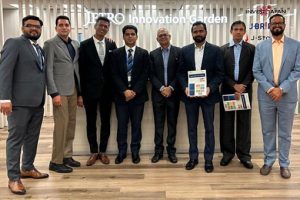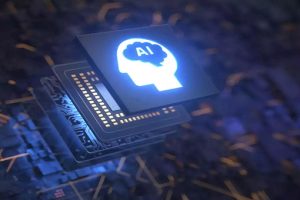Alibaba DAMO Academy has released its forecasts for the top trends that will affect the IT industry in the coming year.
By analyzing millions of public papers and patent filings over the last three years, as well as conducting interviews with nearly 100 scientists, DAMO has identified the top ten technology trends for the next two to five years, during which we can expect accelerated breakthroughs and impacts across sectors in the economy and society at large.
Jeff Zhang, Head, Alibaba DAMO Academy, said, “Over the past century, the evolution of digital technologies has accelerated technological progress and industrial development. The boundary of technologies is extended from the physical world to mixed reality, while more and more cutting-edge technologies find their way to industrial applications. Digital technology plays an important role in powering a green and sustainable future, whether it is applied in industries such as green data centers and energy-efficient manufacturing, or in day-to-day activities like paperless office. With technology, we will create a better future.”
We anticipate a rush of applications operating on top of the new computing system over the next two years:
#1 Cloud-Network-Device Convergence: The rapid development of new network technologies will fuel the evolution of cloud computing towards a new computing system of cloud-network-device convergence.
In the next three years, we expect to see AI broadly applied in the research process of applied science, the widespread use of silicon photonic chips in large-scale data centers, AI paving the way for the integration of renewable energy sources into the power grid, people-centric precision medicine becoming a major trend, groundbreaking improvements in the performance and interpretability of privacy-preserving computation, as well as a new generation of XR glasses:
#2 AI for Science: AI will be broadly applied in the research process of applied science and be used as a production tool in some basic sciences.
#3 Silicon Photonic Chips: A widespread use of silicon photonic chips in high-speed data transmission in large-scale data centers.
#4 AI for Renewable Energy: AI to pave the way for the integration of renewable energy sources into the power grid and contribute to the safe, efficient, and reliable operation of the power grid.
#5 High-precision Medicine: People-centric precision medicine become a major trend that will span multiple fields of healthcare, including disease prevention, diagnosis, and treatment.
#6 Privacy-preserving Computation: Groundbreaking improvements in the performance and interpretability of privacy-preserving computation, and witness the emergence of data trust entities that provide data sharing services based on the technology.
#7 Extended Reality (XR): A new generation of XR glasses that have an indistinguishable look and feel from ordinary glasses entering the market and serving as a key entry point to the next generation of the Internet.
In the next five years, we expect to see perceptive soft robotics replacing conventional robots in the manufacturing industry, and satellites and terrestrial systems working as computing nodes providing ubiquitous connectivity:
#8 Perceptive Soft Robotics: Perceptive soft robotics will replace conventional robots in the manufacturing industry and pave the way for the wider adoption of service robots in our daily life.
#9 Satellite-terrestrial Integrated Computing: Satellites and terrestrial systems will work as computing nodes to constitute an integrated network system providing ubiquitous connectivity.
And beyond, we expect to see the future AI shifting to the co-evolution of large- and small-scale models via clouds, edges, and devices:
#10 Co-evolution of Large- and Small-scale AI Models: The future AI is shifting from the race on the scalability of foundation models to the co-evolution of large- and small-scale models via clouds, edges, and devices, which is more useful in practice.






















